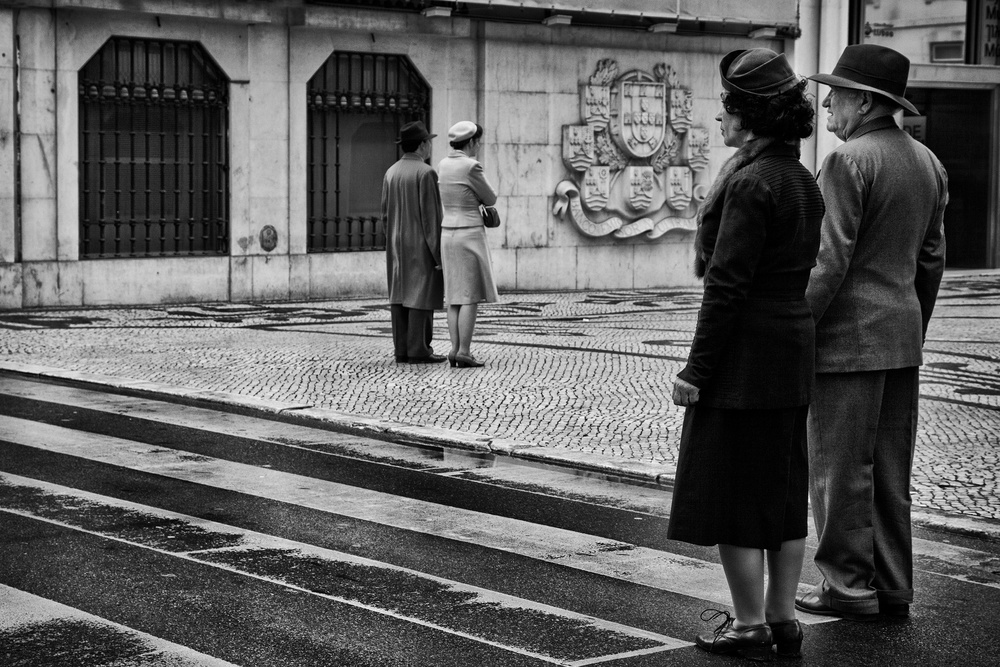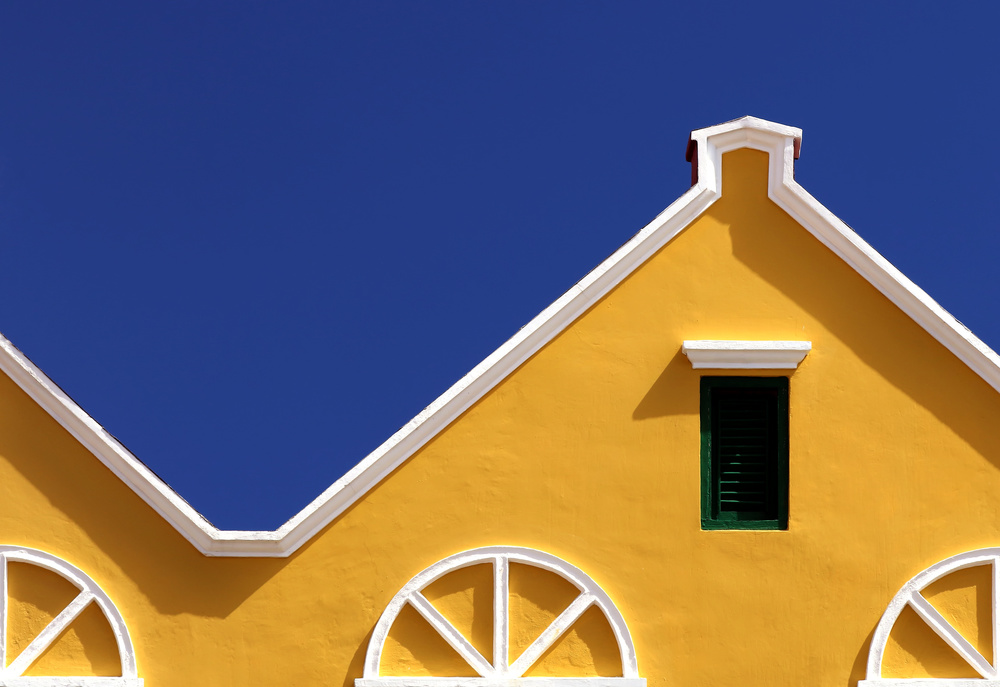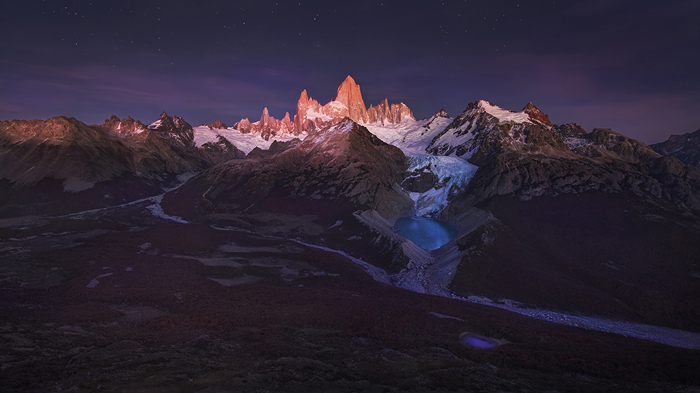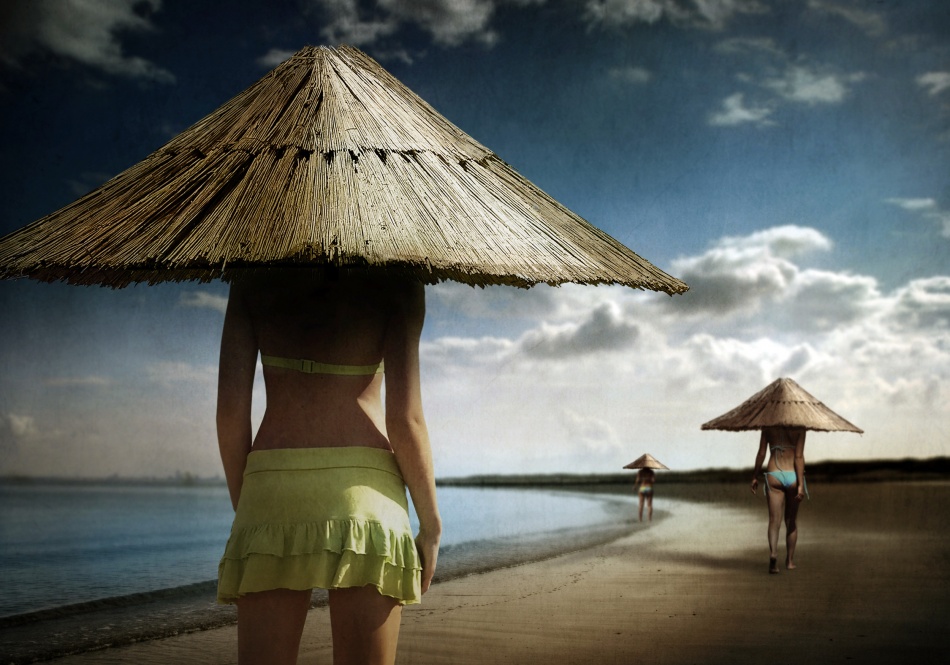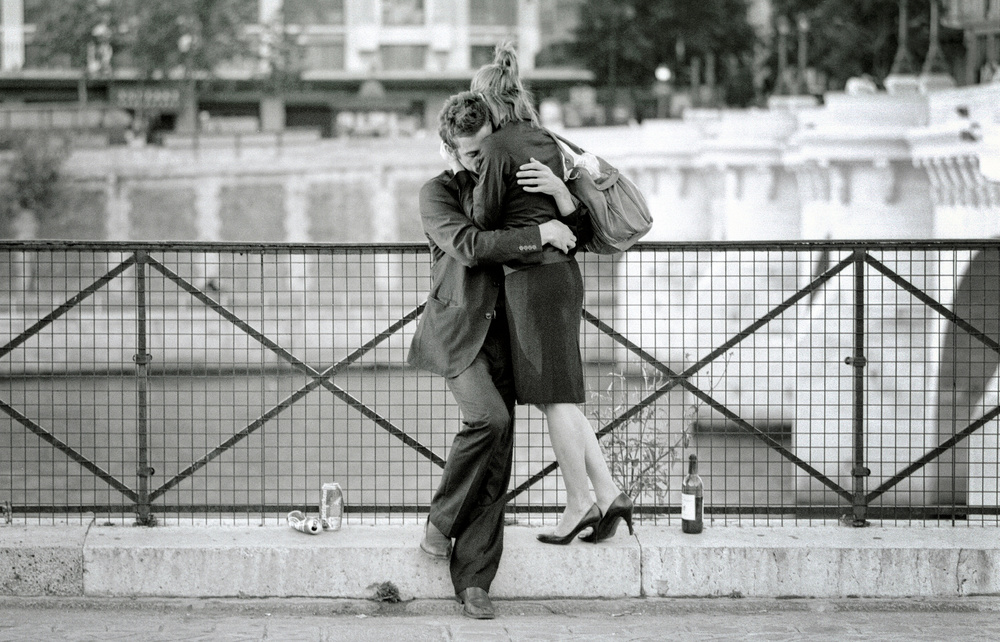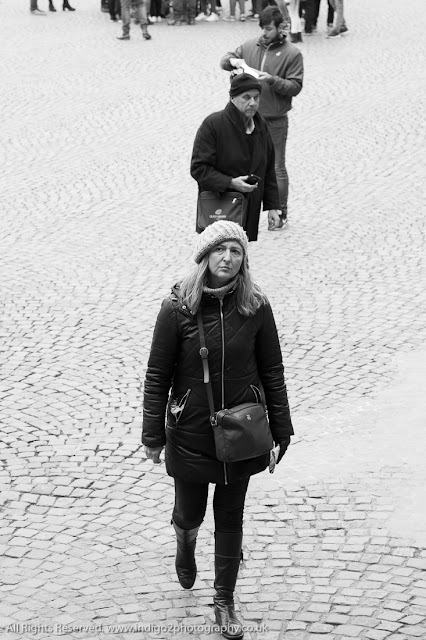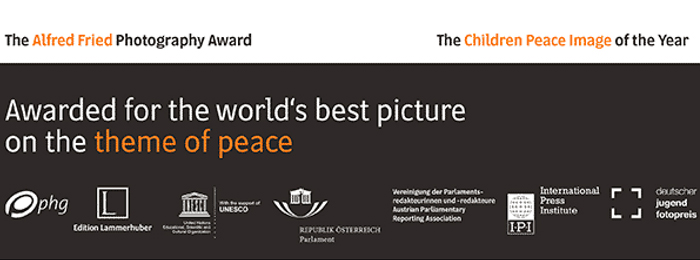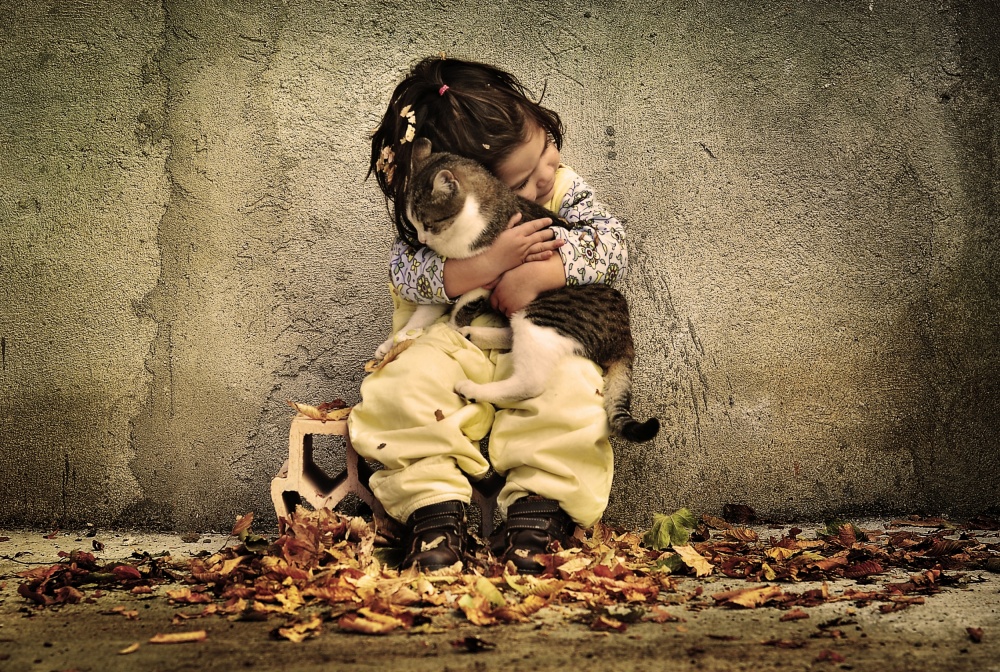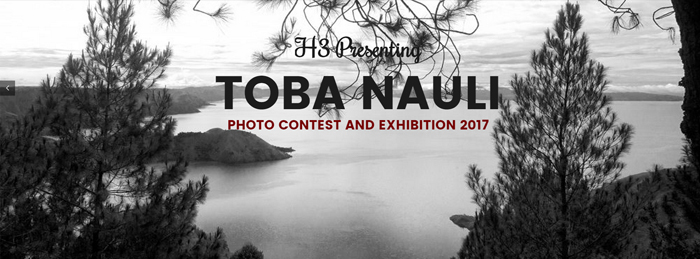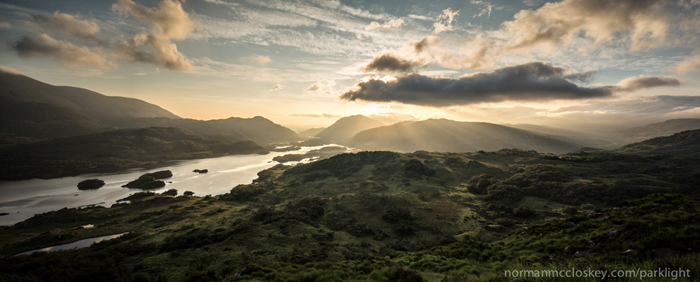Tips & Tricks
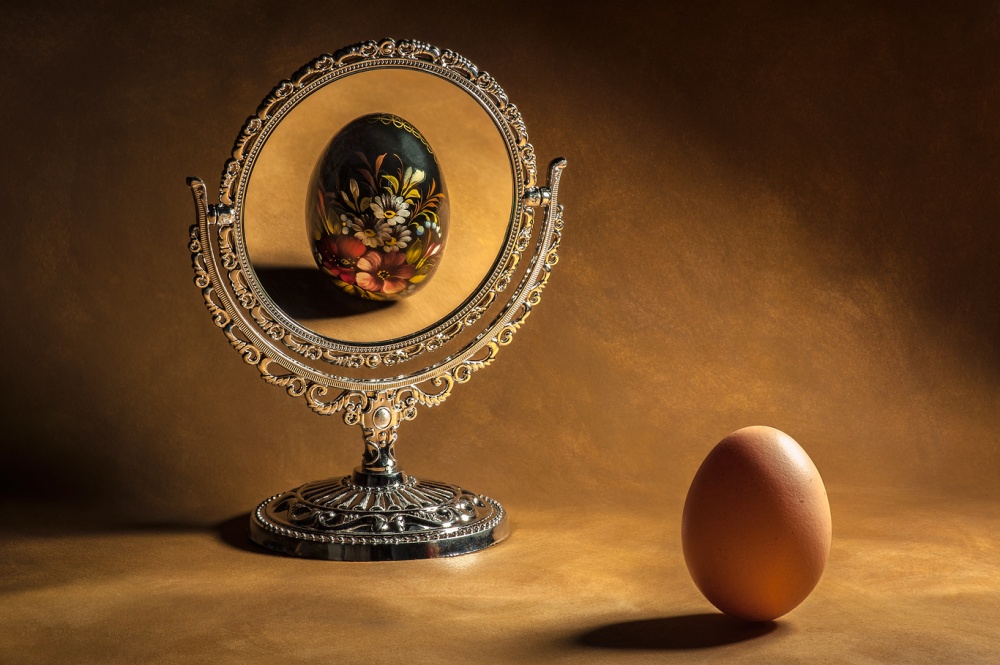
Vanity
1x Blog-Tips & Tricks' .
One day as I took out an egg from the fridge, I looked at it and thought about the painted egg in my living room. This is how the story of the conceited egg came about. The characters where already there in my home. All I needed was a suitable mirror. I tried for months to find one to no avail, until I visited a nearby town as a tourist and stepped into a small shop and found “my” mirror on a shelf.
Back home I started experimenting with the two eggs in front of the mirror. I tried different distances and angles to get a better balanced image with the subjects well distributed in the scene. I noticed that the mirror was composed of two reflective parts; one side was concave and the other side was flat. The concave surface was perfect for my purpose since it magnified the egg's reflection to the same size as the egg in front of the mirror.
Even after setting the aperture to f/22, I realized that I could not get enough depth of field because the three focal planes of the two eggs and the mirror were too far apart. It was therefore necessary to take several pictures and combine them using a focus stacking technique in post-processing.
But first I had to create the environment. I thought that the most suitable background color would be ochre yellow-brown, not as a flat color but mottled. I used a sheet of 28×40" (70×100 cm) drawing paper and applied tempera paint to it using a folded, crumpled sheet of paper. First I painted with yellow and light brown, then with yellow and darker brown.
I hung the colored background paper into position with two Plamps. The mirror was placed close to the background and the painted egg was placed about 7.5" (19 cm) from the mirror. I mounted the camera on the tripod a bit higher than the base and positioned it in such a way that the reflected image was visible in the center of the mirror. I decided to use a small, circular halogen light, about 4" (10 cm) in diameter and with 12 watt power, supported by a Plamp. In front of the light I mounted a snoot made out of aluminum foil to direct the light. This created a kind of vignetting around the image and a stream of light on the background that guides the eye from the egg toward the mirror.
I estimated that for the three stacked images an aperture of f/18 would be optimal, so I set ISO to 200 (for the highest image quality) and used Aperture Priority mode, which resulted in an exposure time of 2.5 seconds.
I checked the camera display for areas with burned highlights. Then I took the photos in this order:
Photo 1: Painted egg, focus on mirror frame.
Photo 2: Painted egg, focus on the mirror image.
Photo 3: Chicken egg, focus on the egg.
To place the eggs in the exact spot, I made a mark with a pencil on the paper.
6) I then imported the TIFF file and merged it with Photo 3.
7) The resulting image contained some imperfections due to the fact that the photos were not perfectly aligned to start with, so I proceeded with the Retouch function to correct it. I chose the Retouch button and the double screen view. The screen now showed two photos, the left one corresponding to the level I want to copy (levels are as many as the images to be merged) and the right one showing the final image. The retouching is done with a circular cross-section Brush that can be adjusted in Size, Hardness, Brightness, etc. Once I was happy with the result, I saved the file in TIFF format
8) Finally, I exported the TIFF to Photoshop CS6 to remove some spots and imperfections using the Clone Stamp tool and the Spot Healing Brush tool.
. '
This week, our special attention will go to "Still Life" Photography.
To start let's discover the making of this lovely creation called "Vanity" by Raffaele Spettoli
Vanity is a strange thing — a sin of self-complacency that perhaps all of us fall into every now and then, even if only unconsciously.
In the living room, along with other small collectibles, there was (and still is) a hand-painted wooden egg resting on its stand — a gift from a friend. I often look at it and thought it was very impressive. The artist had painted it so elegantly with leaves and flowers; it is so beautiful.
One day as I took out an egg from the fridge, I looked at it and thought about the painted egg in my living room. This is how the story of the conceited egg came about. The characters where already there in my home. All I needed was a suitable mirror. I tried for months to find one to no avail, until I visited a nearby town as a tourist and stepped into a small shop and found “my” mirror on a shelf.
"The concave surface was perfect for my purpose since it magnified the egg's reflection to the same size as the egg in front of the mirror."
Back home I started experimenting with the two eggs in front of the mirror. I tried different distances and angles to get a better balanced image with the subjects well distributed in the scene. I noticed that the mirror was composed of two reflective parts; one side was concave and the other side was flat. The concave surface was perfect for my purpose since it magnified the egg's reflection to the same size as the egg in front of the mirror.
Even after setting the aperture to f/22, I realized that I could not get enough depth of field because the three focal planes of the two eggs and the mirror were too far apart. It was therefore necessary to take several pictures and combine them using a focus stacking technique in post-processing.
But first I had to create the environment. I thought that the most suitable background color would be ochre yellow-brown, not as a flat color but mottled. I used a sheet of 28×40" (70×100 cm) drawing paper and applied tempera paint to it using a folded, crumpled sheet of paper. First I painted with yellow and light brown, then with yellow and darker brown.
"In front of the light I mounted a snoot made out of aluminum foil to direct the light. This created a kind of vignetting around the image and a stream of light on the background that guides the eye from the egg toward the mirror."
I hung the colored background paper into position with two Plamps. The mirror was placed close to the background and the painted egg was placed about 7.5" (19 cm) from the mirror. I mounted the camera on the tripod a bit higher than the base and positioned it in such a way that the reflected image was visible in the center of the mirror. I decided to use a small, circular halogen light, about 4" (10 cm) in diameter and with 12 watt power, supported by a Plamp. In front of the light I mounted a snoot made out of aluminum foil to direct the light. This created a kind of vignetting around the image and a stream of light on the background that guides the eye from the egg toward the mirror.
I estimated that for the three stacked images an aperture of f/18 would be optimal, so I set ISO to 200 (for the highest image quality) and used Aperture Priority mode, which resulted in an exposure time of 2.5 seconds.
I checked the camera display for areas with burned highlights. Then I took the photos in this order:
Photo 1: Painted egg, focus on mirror frame.
Photo 2: Painted egg, focus on the mirror image.
Photo 3: Chicken egg, focus on the egg.
To place the eggs in the exact spot, I made a mark with a pencil on the paper.
POST PROCESSING
The post-processing was done in Lightroom 5, Helicon Focus (focus stacking software) and Photoshop CS6.
1) I imported the three images into Lightroom 5 and started in the Basic panel of the Develop module. First I made the following adjustments to Photo 1: Temperature 5500, Exposure –0.45, Contrast –17, Highlights –100, Shadows –19, Whites +22, Blacks +26, Clarity +66 and Vibrance +36. I did this according to my personal taste, wanting a warm and inviting atmosphere in the image.
2) I copied all the settings from Photo 1 and used them for Photo 2 and 3 also.
3) In Photo 1, I used the Adjustment Brush to adjust some parts of the reflected egg. The following settings were used: Exposure –0.56, Contrast –100, Highlights 100, Shadows 60, Clarity 43 and Sharpness 45.
4) Finally I saved each image in TIFF format.
5) The next step was to import the photos into Helicon Focus to merge them for the focus stacking. I imported Photo 1 and 2 and then clicked on Render, using Method B (Depth Map) and leaving all other settings at default. Then I saved it in TIFF format.
1) I imported the three images into Lightroom 5 and started in the Basic panel of the Develop module. First I made the following adjustments to Photo 1: Temperature 5500, Exposure –0.45, Contrast –17, Highlights –100, Shadows –19, Whites +22, Blacks +26, Clarity +66 and Vibrance +36. I did this according to my personal taste, wanting a warm and inviting atmosphere in the image.
2) I copied all the settings from Photo 1 and used them for Photo 2 and 3 also.
3) In Photo 1, I used the Adjustment Brush to adjust some parts of the reflected egg. The following settings were used: Exposure –0.56, Contrast –100, Highlights 100, Shadows 60, Clarity 43 and Sharpness 45.
4) Finally I saved each image in TIFF format.
5) The next step was to import the photos into Helicon Focus to merge them for the focus stacking. I imported Photo 1 and 2 and then clicked on Render, using Method B (Depth Map) and leaving all other settings at default. Then I saved it in TIFF format.
6) I then imported the TIFF file and merged it with Photo 3.
7) The resulting image contained some imperfections due to the fact that the photos were not perfectly aligned to start with, so I proceeded with the Retouch function to correct it. I chose the Retouch button and the double screen view. The screen now showed two photos, the left one corresponding to the level I want to copy (levels are as many as the images to be merged) and the right one showing the final image. The retouching is done with a circular cross-section Brush that can be adjusted in Size, Hardness, Brightness, etc. Once I was happy with the result, I saved the file in TIFF format
8) Finally, I exported the TIFF to Photoshop CS6 to remove some spots and imperfections using the Clone Stamp tool and the Spot Healing Brush tool.
TIPS
1) Make sure to take all the shots with the same shutter speed, aperture and ISO.
2) You have to find two eggs of similar size so the focus stacking will be accurate when you merge the files.
3) To keep the egg straight you can create a support out of a 1 mm thick wire formed into a small circle of ¼" (6 mm) in diameter.
2) You have to find two eggs of similar size so the focus stacking will be accurate when you merge the files.
3) To keep the egg straight you can create a support out of a 1 mm thick wire formed into a small circle of ¼" (6 mm) in diameter.
BIOGRAPHY
I was born and live in Ferrara, Italy. I love photography because it excites me and makes me feel alive. It is a way of looking at the world around me — and in me.




